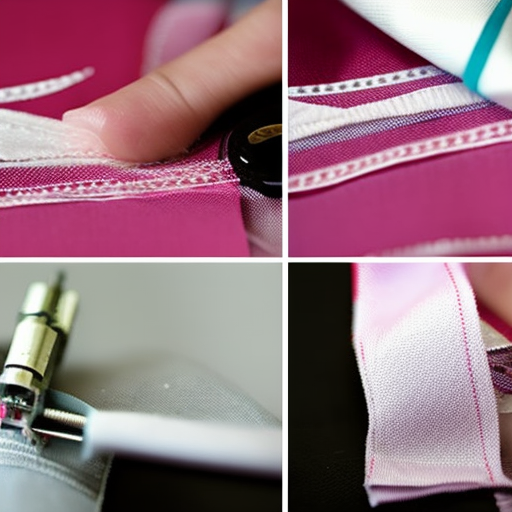Sewing is a versatile skill, enabling you to create and mend garments, accessories, and home textiles. Whether you’re a beginner or an experienced seamstress, mastering various sewing techniques and processes will enhance your skills and open up a world of creative possibilities.
1. Hand Stitching
Hand stitching is a fundamental sewing technique that allows for precision and control. Some commonly used hand stitches include running stitch, backstitch, slip stitch, and blanket stitch. Learning these stitches will enable you to sew buttons, create seamless hems, and attach decorative elements.
2. Machine Sewing
Machine sewing is widely used in garment construction due to its efficiency and durability. Understanding how to thread a sewing machine, adjust tension, and select appropriate stitches will greatly enhance your sewing projects. Basic machine stitches include straight stitch, zigzag stitch, and the versatile and stretchy overlock stitch.
3. Seam Finishes
Seam finishes are essential for a professional-looking finish and to prevent fraying. Popular seam finishes include zigzag stitching, French seams, serged edges, and bias binding. Each finish offers a different level of durability and aesthetic appeal, depending on the fabric and project.
4. Hemming Techniques
Hemming involves finishing the raw edges of fabric, creating a neat and polished look. There are various hemming techniques to choose from, including double-fold hems, blind hems, and rolled hems. Mastering these techniques will give your garments a professional finish.
5. Pattern Reading and Construction
Understanding sewing patterns and how to use them is a crucial skill for sewing enthusiasts. Patterns provide step-by-step instructions for creating garments and other items. Learning how to interpret pattern markings, cut fabric, and assemble pieces will elevate your sewing projects.
6. Applique and Embroidery
Applique and embroidery techniques allow you to add decorative elements to your sewing projects. Applique involves attaching fabric pieces onto a base fabric, creating beautiful designs. Embroidery, on the other hand, uses needle and thread to create intricate patterns and designs directly on the fabric. These techniques can transform ordinary garments into unique and personalized creations.
7. Fastening Methods
Exploring different fastening methods will give you versatility in your sewing projects. Some common fastenings include zippers, buttons, snaps, hooks, and eye closures. Each fastening method has its advantages and specific applications, depending on the garment or item you’re creating.
8. Garment Alterations
Being able to alter garments is a valuable skill, as it allows you to customize fit and modify existing clothing items. Common garment alterations include adjusting hems, taking in sides, replacing zippers, and tailoring for a perfect fit. With some basic alteration techniques, you can breathe new life into your wardrobe.
Conclusion
Mastering various sewing techniques and processes enables you to unlock your creativity and create professionally finished sewing projects. By investing time in learning and practicing these skills, you’ll be able to sew beautiful garments, accessories, and home textiles to cherish for years to come.




